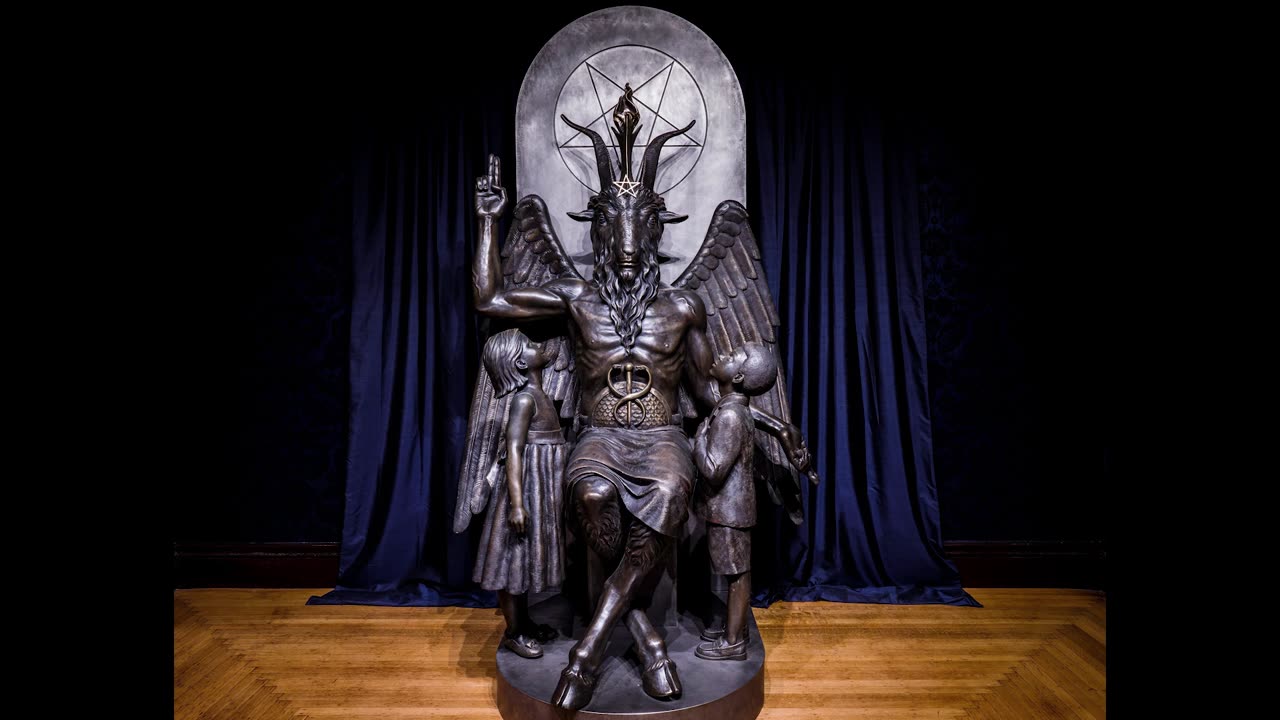Premium Only Content

“Hail Satan?” and the Fight for True Religious Freedom in America
The 2019 documentary Hail Satan?, directed by Penny Lane, offers a compelling look into The Satanic Temple, a non-theistic religious organization that uses Satanic imagery to advocate for the separation of church and state and to challenge the dominance of Christian norms in public institutions.
One of the central events depicted in the film is The Satanic Temple's response to the installation of a Ten Commandments monument on the grounds of the Oklahoma State Capitol. In a bid to highlight issues of religious favoritism, The Satanic Temple petitioned to install their own statue of Baphomet, a symbolic representation of pluralism and religious freedom. This act was not an endorsement of Satan worship but a strategic move to underscore the importance of equal representation for all religious beliefs in public spaces.
The Satanic Temple's actions bring to light a critical discussion about the interpretation of "freedom of religion" in the United States. While the First Amendment guarantees this freedom, The Satanic Temple argues that, in practice, it often translates to a preference for Christian beliefs, especially in public and governmental contexts. For instance, when public schools allow after-school Bible clubs, The Satanic Temple has sought to establish After School Satan Clubs to provide alternative perspectives and ensure that non-Christian viewpoints are also represented.
Moreover, The Satanic Temple has engaged in legal actions to challenge laws they perceive as infringing upon religious freedoms. In 2021, they filed a lawsuit against Texas's abortion restrictions, claiming that such laws violated their members' religious rights. This case exemplifies TST's commitment to using legal avenues to advocate for a broader interpretation of religious freedom that includes minority and non-theistic beliefs.
Harvard Law Review
Critics argue that initiatives like The Satanic Temple's are provocative and challenge the traditional religious fabric of the nation. However, supporters contend that such actions are necessary to ensure that the principle of religious freedom is applied equitably, without favoring one belief system over others. The controversy surrounding TST's efforts underscores the ongoing debate about the role of religion in public life and the true meaning of religious freedom in a pluralistic society.
In conclusion, Hail Satan? not only documents the activities of The Satanic Temple but also prompts viewers to reflect on the complexities of religious freedom in America. By challenging the status quo, The Satanic Temple seeks to ensure that all belief systems, including non-theistic ones, have equal standing in the public sphere, thereby advocating for a more inclusive interpretation of the First Amendment.
-
 LIVE
LIVE
MattMorseTV
1 hour ago🔴Trump PREPARES for WAR with VENEZUELA.🔴
1,256 watching -
 LIVE
LIVE
Side Scrollers Podcast
1 day ago🔴SIDE SCROLLERS SUB-A-THON🔴FINAL DAY!🔴Craig Makeover + US Dart Throw + More!
1,123 watching -
 3:48:54
3:48:54
Nerdrotic
6 hours ago $17.39 earnedStar Wars is DEAD! | Is Hollywood Killing Pop Culture | WB for sale - Friday Night Tights 377
45.3K4 -
 39:10
39:10
BonginoReport
9 hours agoPro-Life Journo Attacked In Lawless NYC - Nightly Scroll w/ Hayley Caronia (Ep.163)
60.5K22 -
 7:08:33
7:08:33
Dr Disrespect
9 hours ago🔴LIVE - DR DISRESPECT - BATTLEFIELD KILL CHALLENGE - vs BOBBYPOFF
123K8 -
 LIVE
LIVE
Tundra Tactical
4 hours agoProfessional Gun Nerd Plays Battlefield 6
73 watching -
 LIVE
LIVE
SavageJayGatsby
4 hours agoFriend Friday – Goose Goose Duck Chaos! 🦆💥
99 watching -
 58:55
58:55
Roseanne Barr
6 hours agoJOSH HAMMER | The Roseanne Barr Podcast #120
164K184 -
 1:23:12
1:23:12
Kim Iversen
4 hours agoRFK, JFK, Trump, Charlie Kirk — Deep State Assassinations? | Sean Stone
21.2K47 -
 LIVE
LIVE
EricJohnPizzaArtist
4 days agoAwesome Sauce PIZZA ART LIVE Ep #66: Blabs from Side Scrollers!
74 watching